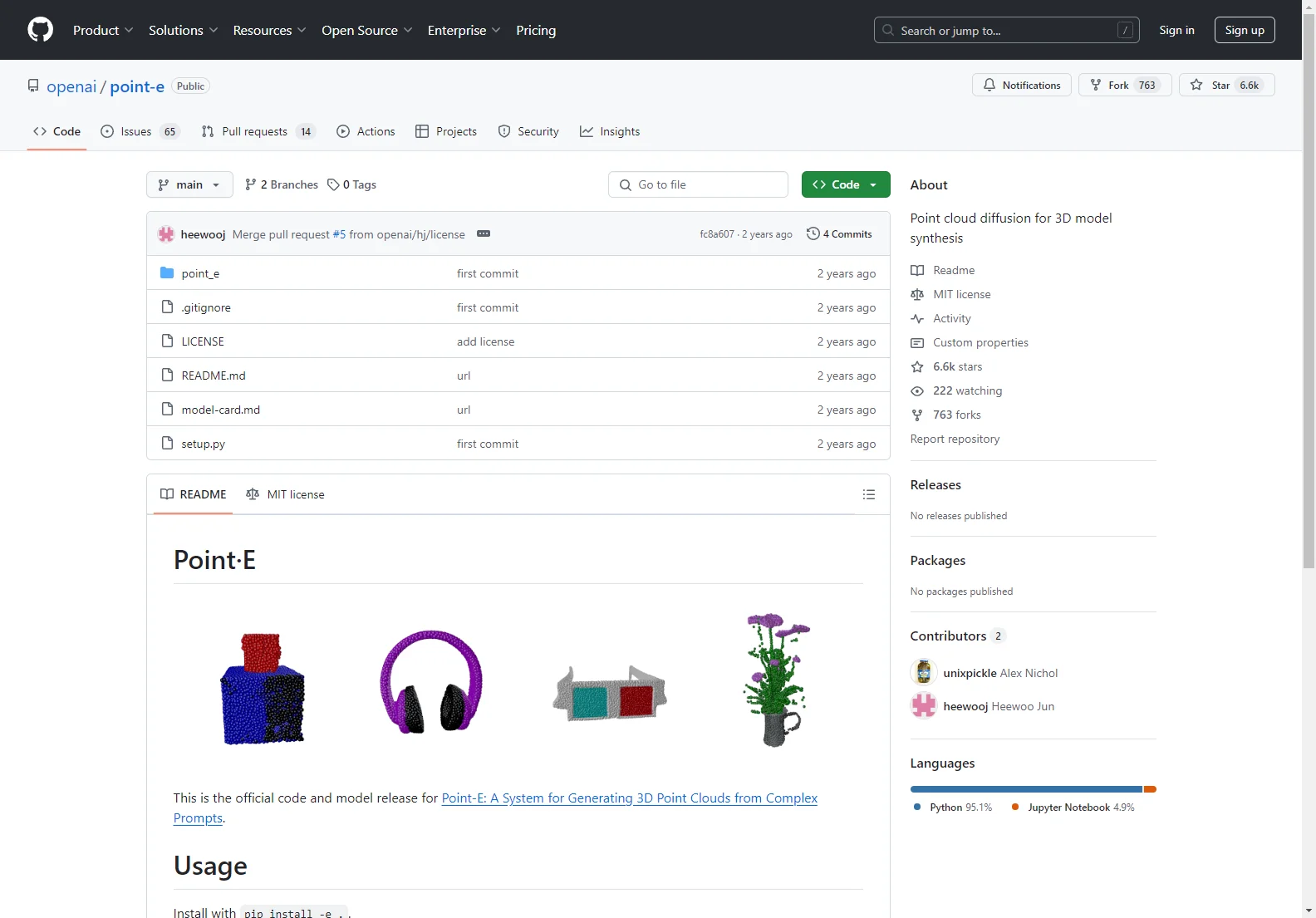Point-E: Generating 3D Point Clouds from Complex Prompts
Point-E is a system developed by OpenAI for generating 3D point clouds from complex prompts. This innovative approach leverages diffusion models to synthesize three-dimensional structures directly from text descriptions or images. Unlike traditional methods, Point-E offers a more efficient and accessible pathway to 3D model creation.
Key Features
- Text-to-3D Generation: Point-E can generate 3D point clouds directly from textual descriptions, opening up new possibilities for creative expression and design.
- Image-to-3D Generation: The system also supports generating 3D point clouds from input images, allowing for the quick conversion of 2D visuals into 3D representations.
- Efficiency: Point-E is designed for efficiency, making it a practical tool for various applications.
- Accessibility: The relative simplicity of Point-E makes it more accessible to a wider range of users compared to more complex 3D modeling software.
Use Cases
Point-E's capabilities extend to a variety of fields:
- Game Development: Rapid prototyping of game assets.
- Architectural Visualization: Quick creation of 3D models for building designs.
- Product Design: Efficient generation of 3D models for new products.
- Virtual Reality (VR) and Augmented Reality (AR): Development of 3D content for immersive experiences.
- Creative Arts: Exploration of new artistic mediums and expressions.
Comparisons
Compared to other 3D modeling techniques, Point-E stands out due to its speed and relative ease of use. While some methods require extensive training data or specialized hardware, Point-E offers a more streamlined workflow. However, the quality of the generated models might not match the detail and precision of more sophisticated, computationally intensive methods. This trade-off between speed and quality makes Point-E a valuable tool for specific applications where rapid prototyping or quick visualization is prioritized.
Limitations
It's important to acknowledge that Point-E, like any AI model, has limitations. The quality of the generated 3D models can vary depending on the complexity and clarity of the input prompt. Highly detailed or nuanced descriptions may not always yield perfectly accurate results. Further development and refinement are ongoing to address these limitations.
Conclusion
Point-E represents a significant advancement in 3D model generation. Its efficiency and accessibility make it a powerful tool for various applications, offering a new approach to creating 3D content from text and images. While limitations exist, its potential for innovation across diverse fields is undeniable.

